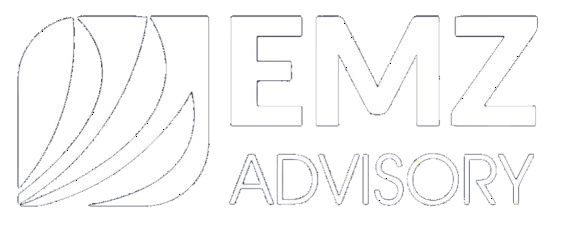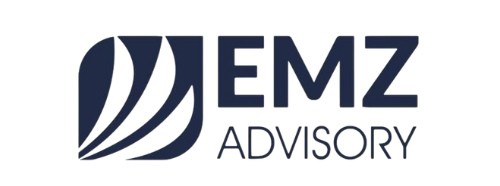The global pandemic COVID-19 has caused disruption to the way the world operated. Many institutions -including businesses and various governments- were not expecting a disruption of this magnitude; and while others may have been prepared to weather tough times in general, many needed to take a reactive approach in dealing with the crisis. The crisis has shoved the world into a land of the unknown, where the uncertainty of the future is daunting from every perspective; meanwhile there are no timelines on when the virus will finally be manageable. However, the world cannot continue functioning on ‘reactive tactics’, as the environment created by COVID-19 could remain for years and might as well be “the new normal”. The pandemic has exposed the shortcomings of fixed-cycle strategies and has afforded businesses an opportunity to uphold a more adaptive approach.
Immediate Pandemic Crisis Response:
To control the impact of the virus on human life, countries of the world have made significant interventions such as implementing lockdown rules that have resulted in many businesses temporarily closing. As such, businesses have had to rapidly adjust to the shifting needs of their workforce, suppliers, and customers, while navigating other operational and financial challenges. This period has accelerated operational changes in the economy that were already in progress, such as utilising digital platforms to reach customers, allowing employees to work remotely and automating operations where possible. Furthermore, some of the changes in people (both customers & employees) behaviour and demand for a different way of working may outlive the current crisis. Preparing for a “workforce of the future” has moved from a far-off concept to an urgent priority. Measures taken by businesses in response to the crisis also needed to address short-to- medium term cash flow challenges and all-inclusive resiliency issues such as executing or creating business continuity plans.
Medium Term Response:
Preparation is always better than reaction because you are better off when you see an obstacle way in advance, this allows you to simply adjust your trajectory with a moderate turn. On the other hand, if you encounter an obstacle unexpectedly, it requires a massive and sometimes risky, turn. Unfortunately, with COVID-19 the latter was reality for many businesses. In each industry and geography affected, the scale of probable change to consider when deciding on the direction to steer businesses into going forward can be unnerving. To rebound from the crisis, companies need to start planning on how to rapidly return business to scale, and how to adjust these plans as the pandemic evolves and resulting economic effects become clearer. This kind of plan may involve a comprehensive approach on how to revive supply chains, matching employee productivity to new business needs whilst protecting the workforce.
Long Term Planning & Renewal:
More companies are surprisingly seeing the benefits of the current environment created by the pandemic and as such, things are not likely to go back to what they were pre-COVID-19; especially if the current state remains as is for over a year. Some benefits include massive cost savings from not needing physical offices to host employees and increased productivity as a result of flexibility and comfort of working from. Global technology giants are already taking the lead in embracing this new normal. One example being an announcement by CEO of the tech company Twitter on a new policy that will allow employees to choose where they want to work from indefinitely. This announcement came after Google’s Alphabet Inc told its employees to work from home for the rest of the year (Frier, 2020) . This therefore challenges organizations to reimagine the new normal in their medium to long- term strategy. This involves understanding what an intermittent shift may look like and the implications of the shift on how organizations should reinvent. We have seen businesses begin to prepare and action towards shifts in regulatory and Competitive environments in their respective industries.
The new normal may lead to a shift in the “go-to market” approach, for example, many businesses may use this opportunity to move into e-commerce and digitize their customers’ experiences or prioritize new business models. Organizations may need to cooperate with others in their industry and form alliances that will allow them to fast-track technology innovation while reducing the funding burden. Merger and Acquisitions opportunities may increase due to historic low market capitalization. Some organizations may need to reduce their geographic footprint because global supply chains increase exposure to health impacts, trade dynamics may become disruptive and recovery of economies across the globe may happen unevenly. Moving from fixed to variable cost could aid businesses in achieving a lower breakeven volume in times of instability. Furthermore, businesses need to think of strategies that will help them address issues that have been consistently affecting their industries. This may require rethinking the business’ brand, reputation, market relevance, workforce flexibility and flexibility to allow for changing tariffs and sustainability.
In future, companies may need to include social, governance and environmental factors in valuing their businesses to ensure that they incorporate resilience to external shocks, such as pandemics. During this crisis, many businesses have had to rethink their priorities, so that resiliency becomes as imperative to their strategy as cost and efficiency. According to McKinsey’s research on the 2008 financial crisis, a few companies in every sector outperformed their peers. What differentiated resilient companies was how well prepared they were before the crisis (In most cases they had stronger balance sheets) and how they effectively acted during the crisis (Mostly referring to their ability to cut down operating costs). Now that the crisis has happened, we cannot turn back the hand of time to ensure prior preparedness. However, businesses have an opportunity to ensure that they have responded adequately to the crisis and are well prepared to navigate a post-pandemic world. The actions taken now will be the biggest differentiator of businesses that will weather the storm and those that will not.
Questions for Company Leadership to Consider in Navigating the “New Normal”:
The following questions are a guide on what company leaders should consider when checking if they have responded to the pandemic adequately and whether they are taking the necessary steps towards a post-covid future:
1. Is our executive leadership adequate?
Is the current leadership team capable of taking the organisation through the crisis by ensuring they are motivated, stable, physically strong, and professionally prepared? This includes establishing measures on how to support and empower the team where necessary because on top of their duties they have their own anxiety & stress, need to support their teams in staying healthy, calm, rational and productive, and often do so while working remotely. Thus, they need emotional support, expert advice, and active patronage from the board.
2. Does management have the right mandate?
Several company boards have changed to short-term targets and are revising them often in newly formed forums. They have acknowledged two primary targets in need of immediate management attention; these are: cash flow and employees’ health
3. Are we providing stakeholders with the information they need?
One of the most important items at the top of crisis response is transparency and effective, consistent communication as often as things change.
4. Are we operating in the most effective way?
Business context has transformed, and many companies have switched to remote work and adjusted their operating processes. Teams hold more frequent but shorter meetings where open discussions and information exchanges have replaced formal presentations. Many companies have adopted technology after resisting it for years such and effective leaders began engaging external experts and consultants to get up to speed with the latest developments in different areas of business.
5. Are we preparing for the post-pandemic future?
Good leaders are not waiting for the crisis to pass before starting to assess strategic opportunities created by the crisis. Even in uncertain times, it is always better to have a plan that can be easily adjusted as the situation changes.
6. Are we taking care of ourselves?
We are all operating on survival mode, this demands high levels of resilience. Company leaders need to pay attention to their own emotional and physical health to ensure that they perform their duties effectively. Furthermore, they need to support their teams to stay motivated and fit.
REFERENCES
Craven, M., Mysore, M., Singhal, S., Smit, S., & Wilson, M. (2020). COVID-19 Briefing Note: Our latest perspectives on the coronavirus pandemic. McKinsey Global
Frier, S. (2020, May 13). Twitter CEO gives employees the choice to work from wherever they want—indefinitely. Fortune Magazine.
Sheksna, S. (2020, April 7). Seven Questions for Corporate Boards Navigating COVID-19. INSEAD Knowledge Website.
Spruit, H., Dixon, J., & Campbell, A. (2020, April 30). Covid-19 and the End of Static Bain & Company.


